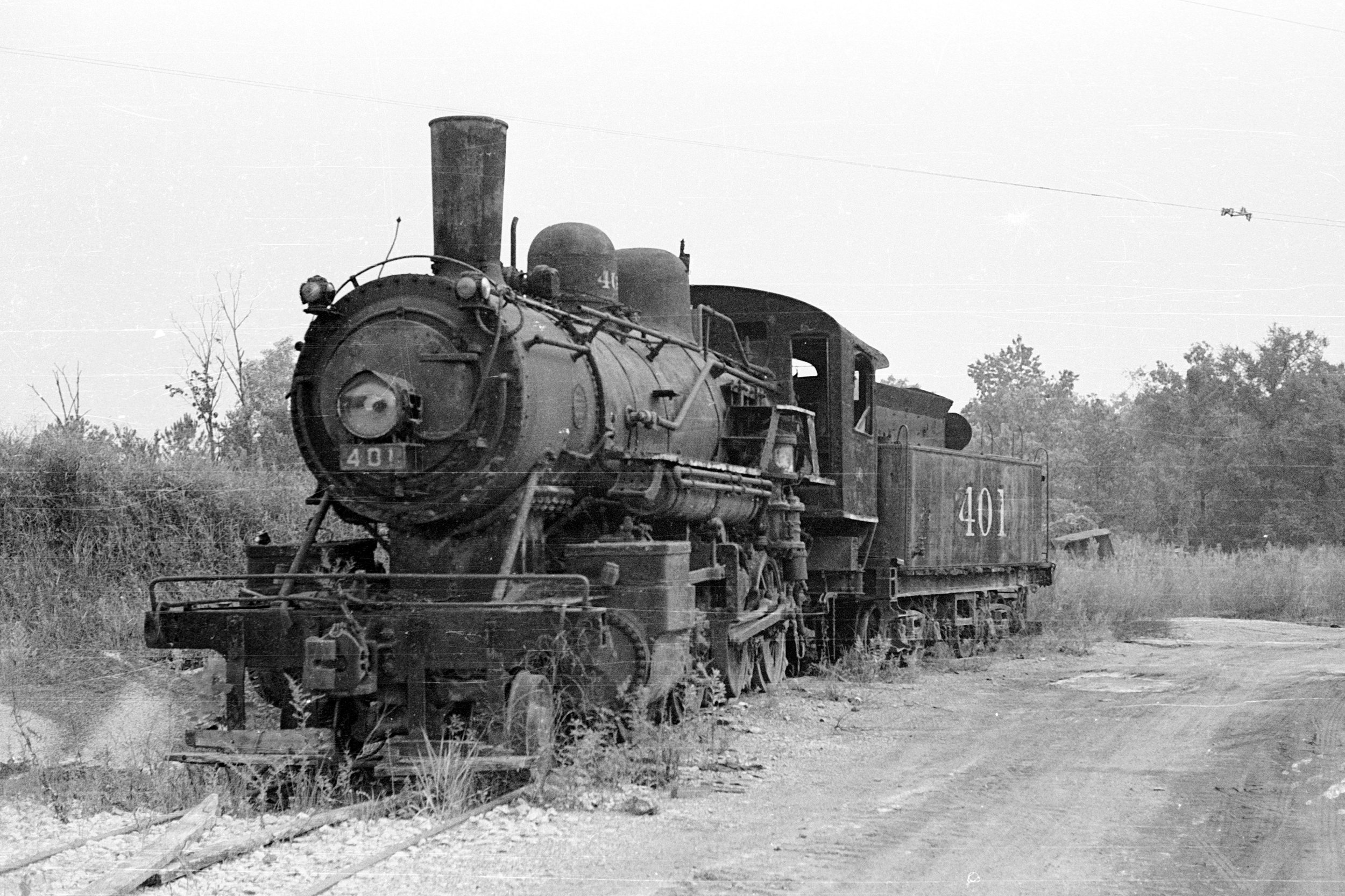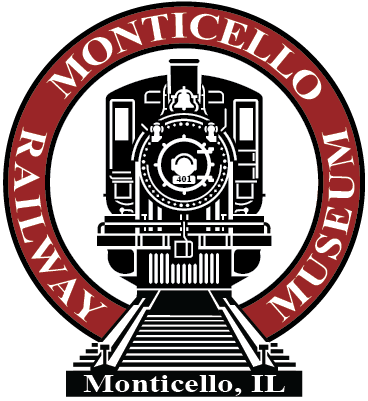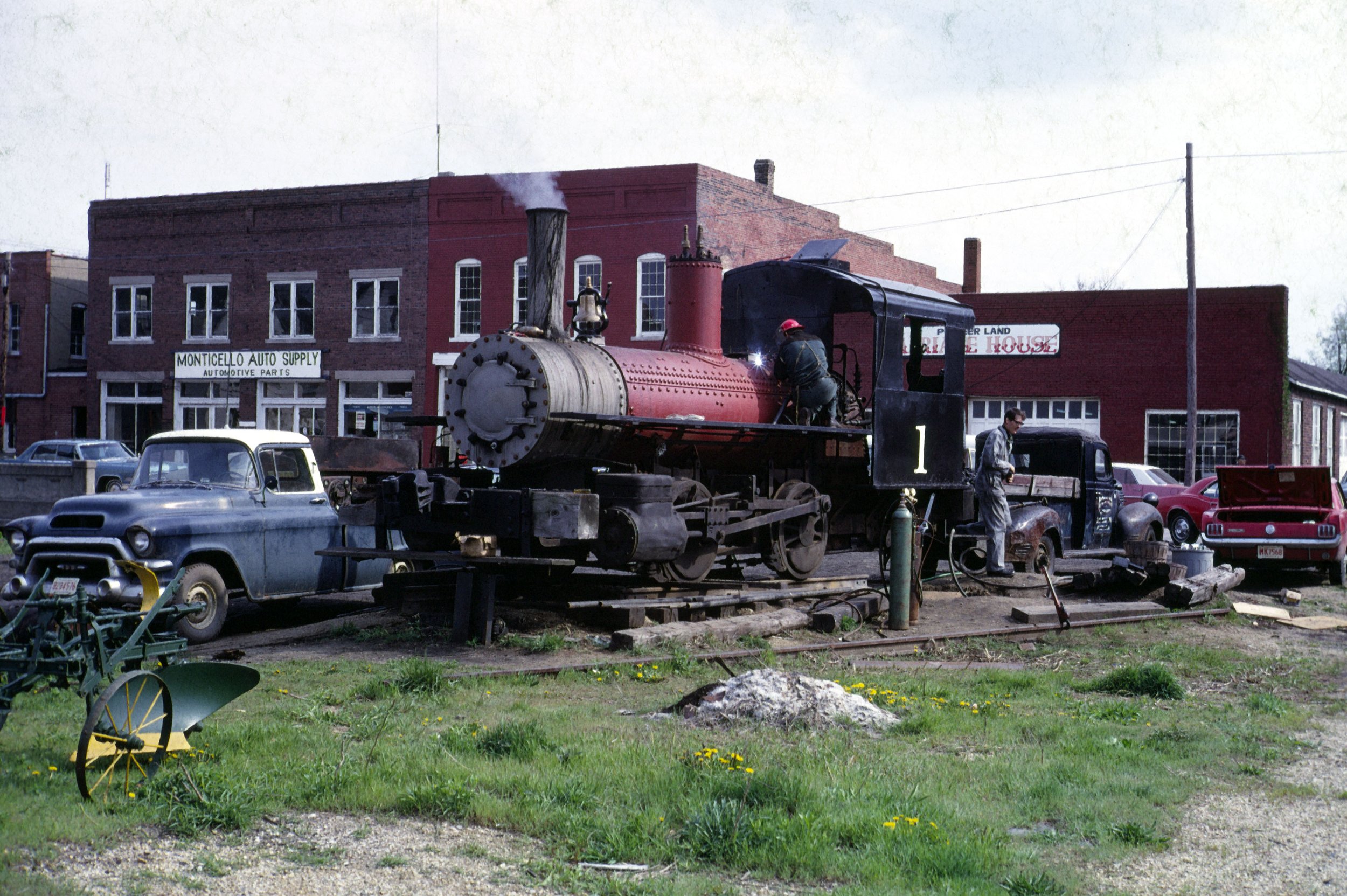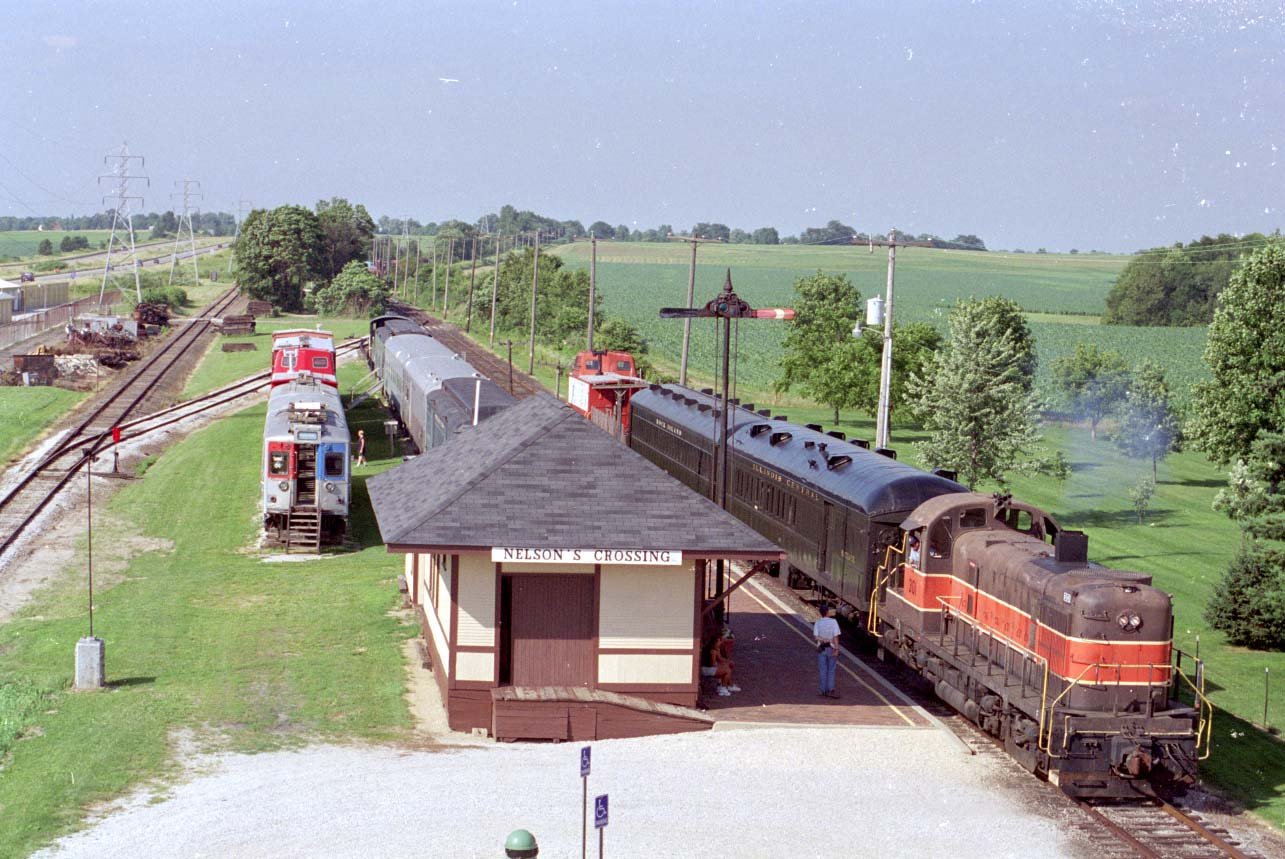
History of the Museum
The Monticello Railway Museum’s first locomotive, No. 1, being test-fired at the Illinois Pioneer Heritage Center in downtown Monticello in the late 1960s.
The origins of the Monticello Railway Museum can be traced back to 1966, when the Chicago, Burlington & Quincy (CB&Q) Railroad announced that they would be cancelling their popular steam train excursion program.
At the time, railroads were replacing their steam locomotives with diesels as diesels proved to be much cheaper and easier to maintain and operate. By the mid-1960s, the few remaining steam locomotives in the United States had become novelties, and some railroads like the CB&Q retained a small fleet of steam locomotives to pull special excursion trains for railfans, schools, and other groups.
However, in 1965, the CB&Q’s management changed, and the new president of the railroad had no interest in continuing the steam program. It was announced that the last steam train on the CB&Q would run in the summer of 1966.
In February 1966, three young railfans attending Illinois Wesleyan University in Bloomington, Illinois, travelled to St. Louis, Missouri to ride and photograph one of the last CB&Q steam excursions. They were also on a mission: they were going to try to save the steam program. During the trip, the three students walked up and down the train recruiting people to write to the railroad management in hopes that they would change their mind and continue the program.
Southern No. 401 in storage at Decatur, Illinois, prior to being moved to the museum in January 1968.
By the end of the trip, 110 passengers had signed up promising to write the railroad. In addition, the three students had also collected 50 cents from each person, and used the $55 to charter the Society for the Perpetuation of Unretired Railfans (SPUR), a group with the goal of keeping the steam program running. Unfortunately, the efforts of SPUR to save the program ultimately failed, and the last CB&Q steam train ran in June 1966. Soon after, the group began to set their sights on a new project: owning their own steam locomotive and running their own excursions. SPUR began looking for a good place to run a steam train, and eventually chose a lightly-used branch line of the Illinois Central Railroad that ran between Le Roy and Sabina, Illinois in rural McLean County. However, upon discussing the plan with the Illinois Central, it was determined that the IC’s requirements for running steam excursions on their property were too expensive and complicated.
After the plan to run on the IC was abandoned, the Illinois Pioneer Heritage Center in Monticello contacted SPUR and encouraged them to have their operation in Monticello. SPUR discovered that Monticello would be a great spot for their operation, as several miles of abandoned right-of-way from the Illinois Terminal interurban railway were available for purchase. Around this time, SPUR purchased their first steam locomotive, a tiny 0-4-0 switch engine, No. 1, that worked for many years at a quarry in Montezuma, Indiana. The engine was moved to Monticello in November of 1966 and placed on a small section of track that SPUR members had constructed in the Illinois Pioneer Heritage Center’s parking lot. Members quickly got to work restoring it to operating condition.
Visitors enjoy a tour of the museum’s Camp Creek Yard in 1972.
Over the next two years, more equipment was obtained by the museum including some former Wabash passenger cars. In 1967, SPUR purchased their second steam locomotive, former Southern Railway 2-8-0 No. 401, from a limestone quarry in Margerum, Alabama. In early 1969, efforts to acquire the Illinois Terminal right-of-way went into full swing, and in April of that year, SPUR renamed itself to the Monticello & Sangamon Valley Railway Historical Society. A few months later, a third steam locomotive, former Republic Steel 0-6-0 No. 191, was purchased. The acquisition of the abandoned Illinois Terminal right of way was completed in 1970, and efforts to rebuild the track began immediately. The little 0-4-0 that was kept in the Illinois Pioneer Heritage Center’s lot was trucked to the new tracks, and ran for the first time on October 13, 1970.
Over the next couple of years, the M&SV continued to expand, acquiring more and more equipment for their collection and upgrading their tracks on the former IT right-of-way. A portion of a popcorn field adjacent to the museum’s tracks was purchased for use as a yard to store the growing equipment collection. (Today, this site is known as Camp Creek Yard and is home to the museum’s main yard, restoration facilities, and locomotive shed.) While the museum’s tracks were not connected to the national rail network, delivering equipment was relatively easy, as the Illinois Central operated a branch line that ran less than 100 feet west of the museum’s track. New equipment arrivals to the museum would be brought in by the IC and “straight-railed” over to the museum’s line, meaning that the IC’s track would be dismantled, rebuilt to connect to the museum’s, then disassembled again after the equipment had been delivered and returned to its original state.
A view of the Nelson Crossing depot and display area from the late 1980s.
Prior to 1972, the M&SV only operated trains for its members. This changed on Memorial Day of that year when steam locomotive No. 1 operated the first public excursion over the group’s entire railroad. Locomotive No. 191 arrived in Monticello later that year and was operational by October, 1972. Work continued on expanding the line north towards the village of White Heath. By 1980, two and a half miles of track had been laid on the former Illinois Terminal right-of-way. Around the same time, the former Illinois Central depot from nearby DeLand was relocated to the M&SV’s grounds and turned into a gift shop and place to purchase train tickets.
In 1982, the M&SV renamed themselves once again to the present-day Monticello Railway Museum. The museum continued to expand, and in 1987, MRM acquired 7.5 miles of the Illinois Central line that paralleled their original track. This acquisition allowed museum trains to reach downtown Monticello, which greatly increased the number of visitors and made accessing the museum easier as passengers could now board trains downtown and take them to the main museum site. A few months later, the former Wabash depot in downtown Monticello was relocated to the museum’s Illinois Central tracks and today serves as MRM’s Monticello depot. While the museum’s original line on the Illinois Terminal right-of-way remains in place, trains normally traverse the former Illinois Central line to reach downtown Monticello.
Wabash No. 1189 leads an excursion train at the Wabash Depot in downtown Monticello in 2021.
Since then, the Monticello Railway Museum has grown to be one of the largest railroad museums in the area, and currently has over 100 pieces of historic railroad equipment in its collection. Steam locomotives No. 1 and 191 last operated in the 1980s before being placed on static display, but Southern No. 401 was returned to service in 2010 and is the pride and joy of the museum.
In recent years, the museum has been taking steps to make its operation even better. A historic locomotive turntable has been acquired along with several new locomotives, cars and cabooses. Other big plans are in the works to make the museum more exciting than ever. We hope that you will come join us to share our passion for all things trains.





